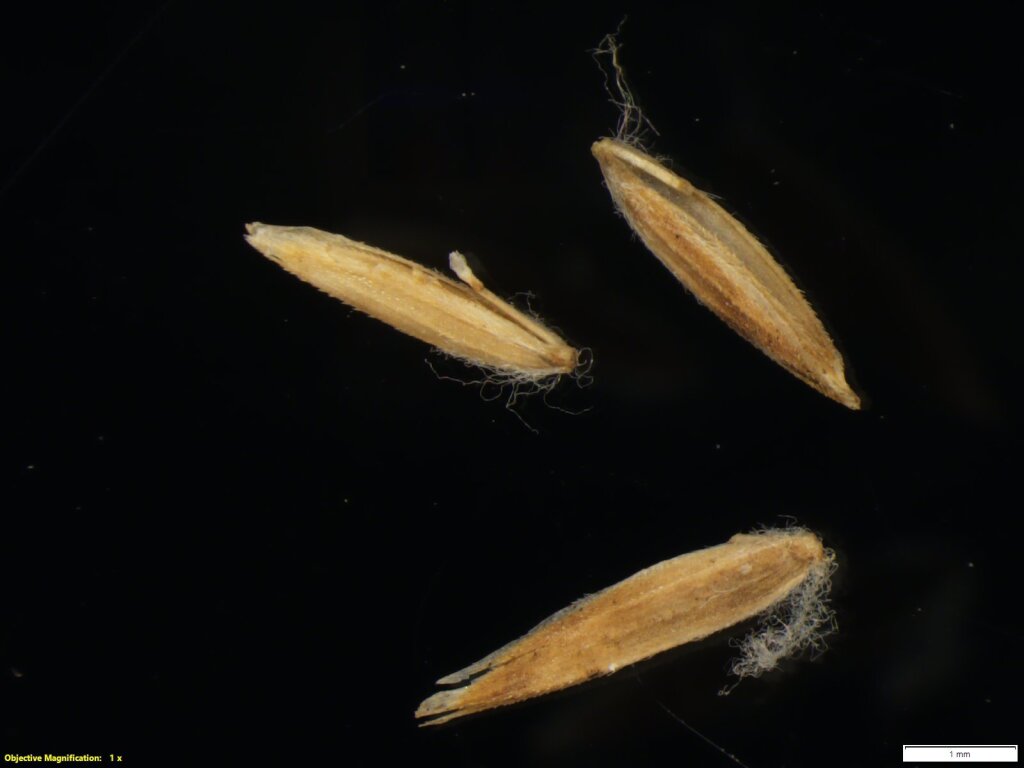Dryopoa dives subsp. dives
Giant Mountain-grassCulms typically more than 1 m (and up to 5 m) high, 4–8-noded. Ligule prominently veined, opaque. Inflorescence green (rarely somewhat purplish). Lower glume 3–5 mm long; upper glume 4.3–5.5 mm long, scabrous along keel and adjacent veins; lemma 5–6 mm long, scabrous.
GipP, OtP, CVU, EGU, WPro, HSF, HNF, HFE, VAlp. Occus in mountain forests above about 300 m altitude. Locally common after disturbance by fire or roadworks in ranges east of Melbourne, mostly on the southern fall of the Dividing Range. Also known from Mt Hunter on northern Wilsons Promontory, but apparently not recorded from there since the early 1900s.
Plants may be a very conspicuous feature of recently burnt forests but become rare about 2 years post-fire.
Some specimens from ranges west of Ensay and Swifts Ck are aberrant in having short (5–6), plump spikelets with lemmas to 4.5 mm long, sometimes with a short subapical awn. These plants appear to be sterile, suggesting some freakish development or possibly hybrid origin, but further exploration of this area is warranted. These specimens had in the past been referred to the largely European grass, Melica picta K.Kich., and are the source of any Australian records of this species, but the similarity is superficial only.
 Spinning
Spinning
